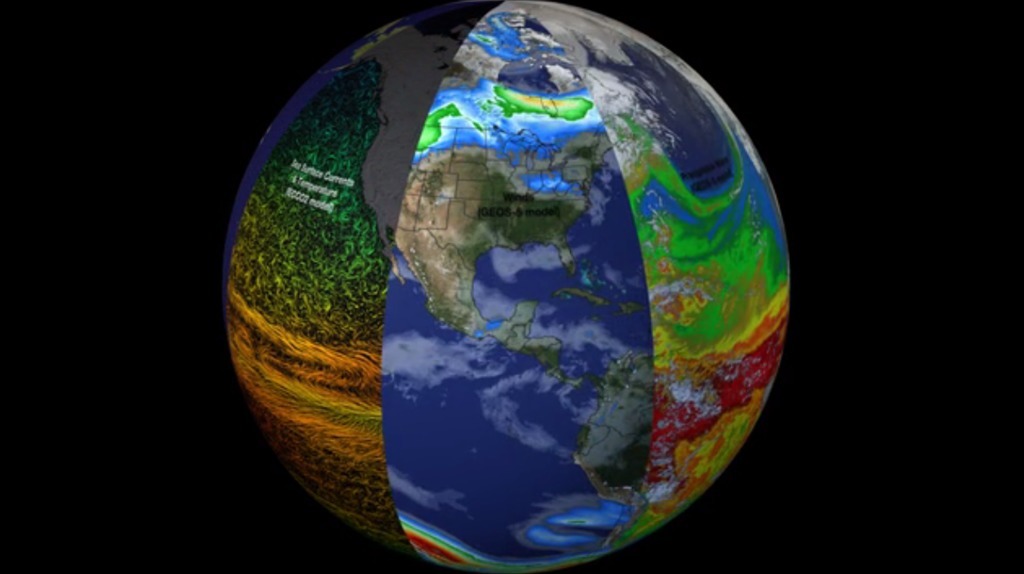April Fool's Day Snow Storm
This visualization starts over the United States as the viewer watches a weather event form over the east coast. We then freeze on April 1, 2017 as GPM flies overhead collecting data over this weather system. Zooming down to the Northeast, GPM's DPR (3D volumetric precipitation data) is slowly cut away to reveal the inner precipitation structure of the snow storm. Looking closely, one can see a thin band of liquid precipitation that formed in the northern section of the storm eventually tapering into frozen precipitation in the far north. The visualization wraps with the camera pulling back to a bird's eye view of the snow storm.
NASA's Global Precipitation Measurement mission or GPM core observatory satellite flew over the United States northeast coast during a snow storm on April 1, 2017. This snow storm delivered up to 18 inches of snow in some parts of New England.
The GPM Core Observatory carries two instruments that show the location and intensity of rain and snow, which defines a crucial part of the storm structure – and how it will behave. The GPM Microwave Imager sees through the tops of clouds to observe how much and where precipitation occurs, and the Dual-frequency Precipitation Radar observes precise details of precipitation in 3-dimensions.
GPM data is part of the toolbox of satellite data used by forecasters and scientists to understand how storms behave. GPM is a joint mission between NASA and the Japan Aerospace Exploration Agency. Current and future data sets are available with free registration to users from NASA Goddard's Precipitation Processing Center website.

Color bar for frozen precipitation rates (ie, snow rates). Shades of cyan represent low amounts of frozen precipitation, whereas shades of purple represent high amounts of precipitation.

Color bar for liquid precipitation rates (ie, rain rates). Shades of green represent low amounts of liquid precipitation, whereas shades of red represent high amounts of precipitation.
Credits
Please give credit for this item to:
NASA's Scientific Visualization Studio Data provided by the joint NASA/JAXA GPM mission.
-
Data visualizers
- Alex Kekesi (Global Science and Technology, Inc.)
- Greg Shirah (NASA/GSFC)
-
Scientists
- Gail Skofronick Jackson (NASA/GSFC)
- Dalia B Kirschbaum (NASA/GSFC)
- George Huffman (NASA/GSFC)
-
Technical support
- Laurence Schuler (ADNET Systems, Inc.)
- Ian Jones (ADNET Systems, Inc.)
Release date
This page was originally published on Monday, April 10, 2017.
This page was last updated on Sunday, January 5, 2025 at 11:20 PM EST.
Missions
This page is related to the following missions:Datasets used
-
Rain Rates (Surface Precipitation) [GPM: GMI]
ID: 822Credit: Data provided by the joint NASA/JAXA GPM mission.
See all pages that use this dataset -
Volumetric Precipitation data (Ku) [GPM: DPR]
ID: 830Credit: Data provided by the joint NASA/JAXA GPM mission.
See all pages that use this dataset
Note: While we identify the data sets used on this page, we do not store any further details, nor the data sets themselves on our site.

